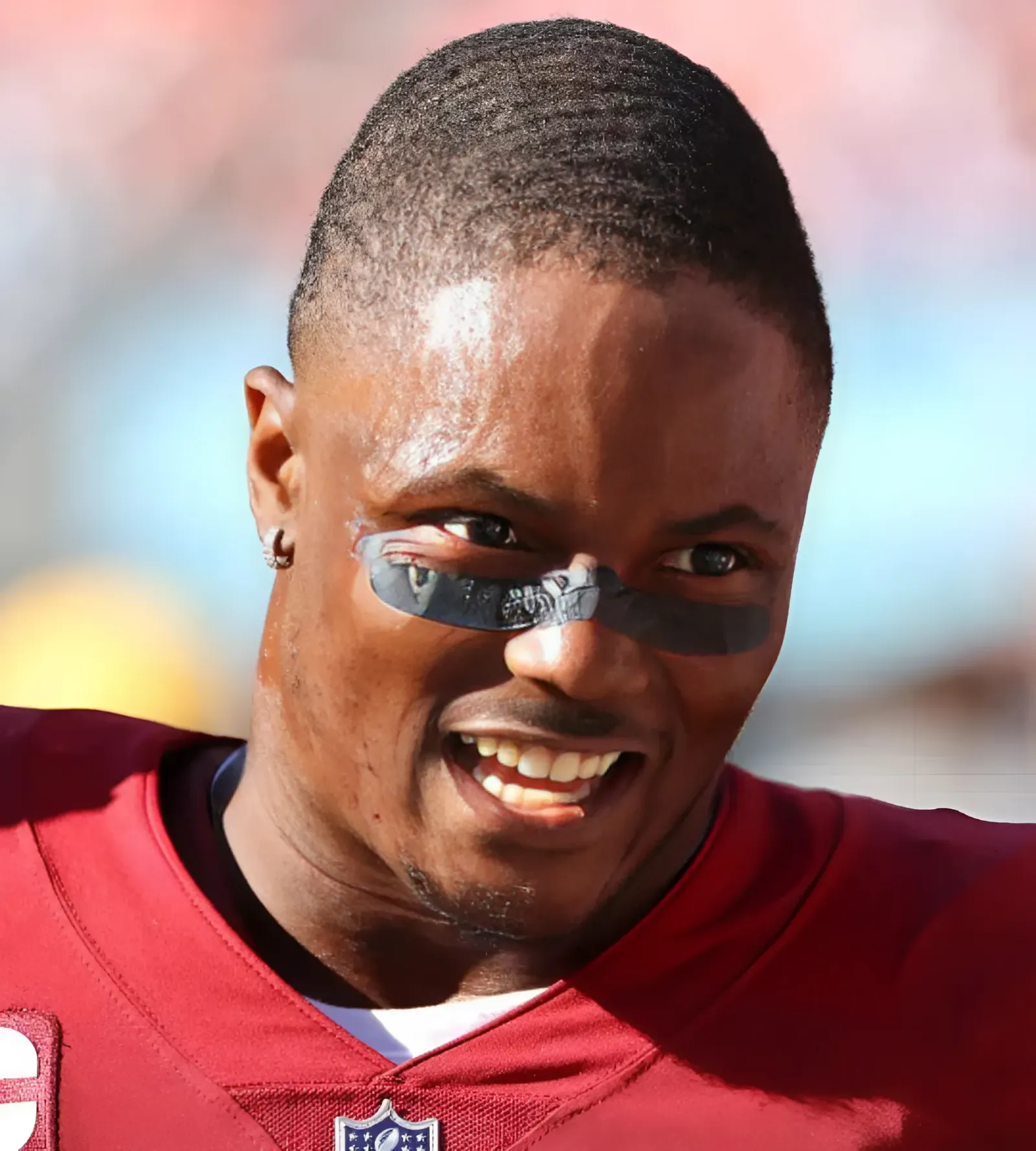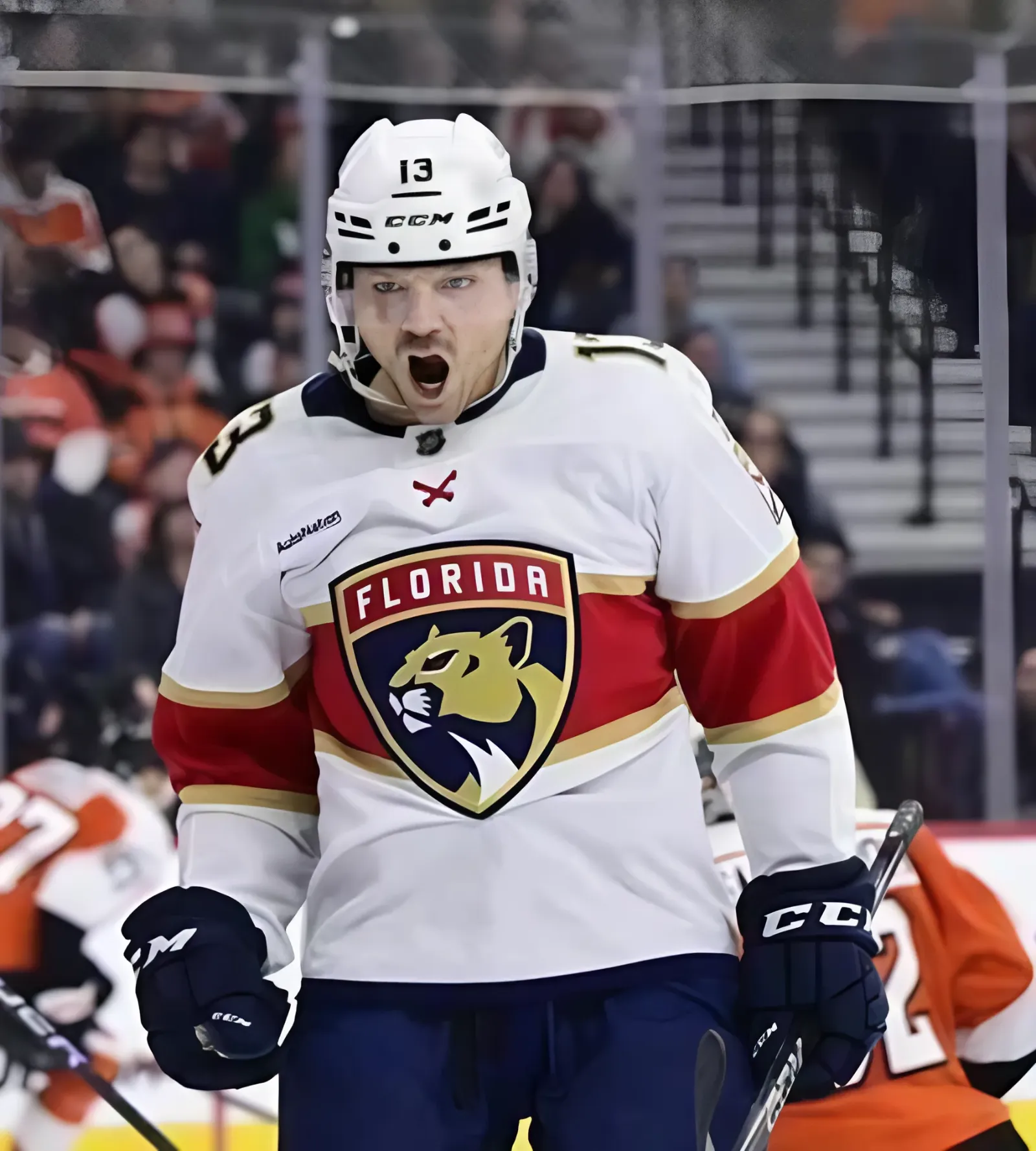The Philadelphia Flyers are 15-15-4 as they near the Christmas stoppage. In this edition of 3 Up, 3 Down, we examine some of the positives and negatives of the team’s recent play. Included are all the key themes and stats from the Orange and Black you need to know.

Philadelphia Flyers 3 Up, 3 Down (The Hockey Writers)
Plus One: Tippett Is Sizzling Hot
For our first positive, Owen Tippett is on one of his hot streaks. Anyone who watched the Flyers closely last season was privy to his extreme up-and-down nature. He’s on the good side of that in the present.
In the last 10 games for all NHL teams, Tippett is tied for seventh in 5-on-5 points with nine. If we look at points per 60 minutes among players with at least 100:00 of ice time, he ranks first. Despite his role on the second power-play unit, the 25-year-old winger is finding ways to produce. He is up to 11 goals and 11 assists for 22 points in 34 contests.
If we focus on themes from last season again, he has been at his best next to center Morgan Frost for another campaign. As a pair at 5-on-5, they have a plus-5 goal differential. They are minus-16 when that isn’t the case, albeit with disastrous luck (.848 on-ice save percentage and a 5.33 on-ice shooting percentage; two factors subject to randomness).
The Tippett-Frost connection has been terrific of late, with the former being the driver of offense. Tippett is on pace for 53 points in his 2024-25 season, which isn’t quite a career-high but close to it. As long as he doesn’t return to his lows during parts of October and November, the 60-70-point range is attainable.
Minus One: Michkov’s Cold Streak
It’s official: Matvei Michkov has entered a slump. With zero points and a minus-8 rating in his last five games, the 20-year-old rookie is seeing perhaps his worst stretch of hockey so far. In that span, he is also fourth-worst in expected goal share at 5-on-5 (45.60%) among Flyer forwards.
While he hasn’t played the best recently, Michkov has 27 points this season in 32 games. Even though he’s atop all rookies in the statistic, both defenseman Lane Hutson (25) and forward Macklin Celebrini (23) are chasing him down in that regard. However, comparison is the thief of joy; we can spin this into a positive section pretty fast.
The winner of the Calder Trophy for the NHL’s best rookie in 2024-25 will have to fight for it. This season, it’s a much more competitive award than before. Just because Michkov may not be the objective favorite doesn’t mean what he’s doing isn’t incredible.
Let’s look at the last player who had similar circumstances to Michkov. That would be winger Kirill Kaprizov, a modern-day superstar who is tied for fourth in league scoring (49 points). Like Michkov, he came over from a ridiculously productive stint in the Kontinental Hockey League (KHL), also possessing little to no knowledge of the English language before he made his NHL debut. Only, Kaprizov was aged 23 and 24 in his rookie season due to his contractual situation in Russia—the Flyers’ youngster just turned 20.
In the COVID-19-shortened 2020-21 campaign, Kaprizov’s 51 points in 55 games were more than enough to capture the Calder Trophy. He took the league by storm and instantly made his Minnesota Wild squad a playoff contender. Despite the monumental age gap and the average ice time favoring the elder of these Russian stars (18:18 to 17:02), they’re neck-and-neck points-wise through 32 games (as rookies). Both sitting at 27, this helps put into perspective what exactly is being showcased in the City of Brotherly Love.

Sure, Michkov isn’t anywhere near his best right now. But that shouldn’t distract from the season he’s having. The rut will likely end promptly and he can go back to being in NHL headlines. It’s not just important for his personal accolades, either—the Flyers could really use the boost.
Plus Two: Foerster-Cates-Brink Line Continues to Shine
The Flyers’ depth has mostly held the team back this season. Despite paying a lot of money to their bottom six, it just hasn’t been effective enough to make up for off nights for the players higher in the lineup. But that has changed since the Tyson Foerster, Noah Cates, and Bobby Brink line was formed 14 games ago.
In that time, the trio has seen 115:43 of ice time together at 5-on-5. Their numbers are below:
| Stat; 5-on-5 | Foerster-Cates-Brink Line; Last 14 Games |
| Expected Goal Share (xGF%) | 63.48% |
| Goal Share (GF%) | 53.85% |
| High-Danger Chance Share (HDCF%) | 68.42% |
| Shot Share (SF%) | 60.44% |
| Shot Attempt Share (CF%) | 58.50% |
Even with subpar puck luck (.833 on-ice save percentage, notably), this third line is outscoring the opposition 7-6. Having a useful group like this in the bottom half of the lineup goes a long way. By creating the level of offense they are, it opens up opportunities for the rest of the team to do the same.
But let’s also consider the impact on the individuals here. In my team player grades through 25 games, the marks for these three were the following: B for Brink, C-minus for Foerster, and D-minus for Cates. These three are now playing like they’re in the low-A, high-B tier. You can’t ask for much more.
However, that doesn’t mean this trio will stick. For three minutes against the Columbus Blue Jackets on Saturday (Dec. 21), the Flyers subbed Michkov in for Brink. The small-sample results were fantastic, as the trio generated 0.40 expected goals and allowed only 0.01. This translated to a tally in their favor, pivotal in the 5-4 overtime victory. While Brink may be slotted elsewhere, the third line’s excellence is poised to continue.
Minus Two: Jumbled Defensive Pairings Are Hurting Drysdale
I have sung the praises of Jamie Drysdale since he returned from a lower-body injury on Dec. 8 several times. Unfortunately, he has recently seen a decline in play—there’s one big reason as to why. The team’s jumbled defensive pairings have been awful for his results.
Emil Andrae was sent down to the American Hockey League (AHL) on Dec. 20, with head coach John Tortorella explaining that he felt the rookie defender wasn’t playing well enough. Regardless of whether or not this assessment is correct, his absence has altered the team’s lineup chemistry. With the defensive pairings jumbled, Drysdale is feeling the hurt more than anyone.
Drysdale has leaned on 31-year-old veteran Nick Seeler to make the most of his minutes. That pairing was one I emphasized in the offseason, and it has played brilliantly as of late. The only problem is that they have been split up largely due to Andrae’s departure—they were a third-pairing staple but the loss of Andrae bumped Seeler up the depth chart. You can see the impact of this below:
| Stat; 5-on-5 | Drysdale with Seeler; Since Dec. 8 | Drysdale without Seeler; Since Dec. 8 |
| Expected Goal Share (xGF%) | 70.45% | 41.72% |
| Goal Share (GF%) | 77.78% | 36.36% |
| High-Danger Chance Share (HDCF%) | 54.17% | 47.62% |
| Shot Share (SF%) | 66.04% | 53.19% |
| Shot Attempt Share (CF%) | 54.87% | 50.51% |
In just over 50 minutes of usage with and without Seeler in that seven-game span, there’s a limited amount of data. Still, the results speak volumes. At 5-on-5, Seeler and Drysdale have outscored their foes 7-2 together—the same can’t be said when they’re apart. On one end of the extreme, there’s a high-quality and talented NHL defender. On the other, there’s one that belongs in the AHL. This has been the case for a while.
For the sake of Drysdale, playing with Seeler has proven to be the best course of action time and time again. Will the Orange and Black return to what has worked for the 22-year-old, or has that ship sailed with Andrae’s demotion? If it has, can he find chemistry with other players and reach his elite potential?
Plus Three: Konecny Isn’t Slowing Down
Travis Konecny couldn’t be touched in the month of November, registering 20 points (tied for fifth-most in the NHL). He has long been a streaky player, though, so regression wasn’t a ridiculous expectation. He has slowed down a tad, but not by much—he has notched his third double-digit point month of the season with games to spare.
Through 34 games this season, Konecny has 16 goals and 24 assists for 40 points. Tied for 15th in the league’s scoring race and ranking 11th in average ice time among forwards (21:10), the 27-year-old winger is playing beyond All-Star level.

It’ll be interesting to see if Konecny can maintain his 96-point pace, but just operating between 80 and 90 would be great for the Flyers. He’s doing this without leaning as much on shorthanded scoring as he was last season, too. He’s at an all-time high.
Be warned, his efficiency is slightly unsustainable, riding an 18.39 shooting percentage and an 88.89 individual points percentage (meaning, he’s getting points on 88.89% of goals he’s on the ice for). But the exact amount Konecny is scoring isn’t relevant—it’s more about the eye test, and he’s passing it with flying colors. Keeping this up through the late stages of the season is his next mission in evolving as a player.
Minus Three: Flyers’ Goaltending Isn’t Stealing Games
For our last minus (and point altogether), the Flyers’ goaltending isn’t at the level it needs to be for Philadelphia’s four-year playoff drought to be snapped. Sophomore Samuel Ersson and rookie Aleksei Kolosov need to begin stealing some games for the team.
What separates the Flyers’ great stretches from the rest is that they’re usually getting the occasional flawless start from one of their netminders. When the offense isn’t clicking, the goalies come up big and secure two points. Once the offense finally starts to get in a groove, that’s when the goaltenders can afford to be imperfect—this should be expected of the Flyers’ inexperienced duo.
However, the Flyers aren’t getting the former. They’re getting the latter, and really only that. In the month of December, the Orange and Black hold a league-worst .824 save percentage. The Buffalo Sabres, who are on a 13-game losing streak, are second-worst at .853.
A fairly good shooting percentage (13.22%) has saved the Flyers a bit, but they’re 3-5-1 in December for a reason. They need to be getting the big saves but that just isn’t happening. Their .656 save percentage on high-danger shots is also the worst in the NHL.
Goaltending can be pretty random in hockey. In one stretch of games, the men between the pipes are a brick wall. The next, everything is getting past them. This is a phenomenon that usually fixes itself, but that’s not good enough for the Flyers. If they are serious about making the postseason, they can’t be having stretches like this. Ersson and Kolosov, 25 and 22 years of age respectively, have to start stealing a few games.
Much like the idea of this post, the Flyers have been up and down this season. Do they have what it takes to put everything together?



